By Johna Till Johnson
← Previous in Everglades ChallengeNext in Everglades Challenge →
.
You can’t make a trip like the Everglades Challenge without relying heavily on your gear. And the quality of that gear varies. Some poorly-designed products break reliably. We haven’t yet found a “waterproof” headlamp that actually lives up to its name, for instance. And we’ve been through almost half a dozen in the past year. (So we make sure to carry plenty of backups.)
There are also those products that perform as they’re supposed to, day in day out. (Everything Kokatat makes comes to mind.) You rely on these products to do their jobs, and never think further about them.
But there are also are a handful of products that either perform infinitely better than you expect, or fill a need you didn’t realize you had.
For these products, you whisper a silent “thank you” to the manufacturers every time you use them. I’m an engineer, so I never lose sight of the fact that when there’s a product I love, it was conceived, designed, and tested by other engineers. And for the products below, I am devoutly grateful to the humans who created them.
Note: We don’t accept money from manufacturers, either as sponsorships or for advertising, and we’re not planning to in the future. We just think these products are so great that you should know about them (and we’d like to thank their manufacturers for making them).
______________________
Product: Watershed drybags
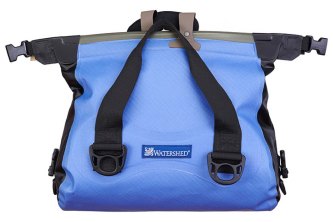 Why it’s great: On every previous camping trip BW (before Watershed) I’d inevitably had the unpleasant experience of leaking drybags. There’s nothing quite like opening up your “dry” clothing to discover that everything’s gotten damp—or worse, sopping wet—during the course of the day. The impact ranges from unpleasant to downright dangerous: If you were relying on your dry clothes to combat hypothermia, you might very well be in trouble.
Why it’s great: On every previous camping trip BW (before Watershed) I’d inevitably had the unpleasant experience of leaking drybags. There’s nothing quite like opening up your “dry” clothing to discover that everything’s gotten damp—or worse, sopping wet—during the course of the day. The impact ranges from unpleasant to downright dangerous: If you were relying on your dry clothes to combat hypothermia, you might very well be in trouble.
Now, it’s true that this is likely due to user error: Either I was filling the bags too much, or not flattening the edges properly. Or something. But here’s the thing: A design that lets a user commit such a serious error without any indication isn’t a very good design.
Enter Watershed. The company, based in North Carolina, has come up with a unique design for the closures of its bags, along with several other innovations. Instead of being at the end of the bag, the closure runs the length of the bag—and you can test it after you’ve closed it, by pulling on two tabs. If the bag opens, you need to do redo the closure. If not, you’re good. And I mean really good—I’ve had bags lashed to the deck and washed by the waves, or sitting in a pool of water in the cockpit, with their contents remaining bone-dry.
Another huge advantage of the bags is that the “lengthwise” closure minimizes the chance of scraping your fingers as you reach into the bag. This sounds like a minor thing—but it’s not. One of the really unpleasant parts of a long trip is the accumulation of scrapes and cuts, particularly on your hands. Combine that with sand and salt, and you can end up in pretty severe pain. A drybag design that doesn’t contribute to hand damage is a blessing.
The bags are also made of thick, durable material that looks as though it never wears through. Another problem with other drybags is that they develop invisible holes. Thus far, Watershed bags haven’t.
The company supplies gear to the U.S. military, and the products are all made in the U.S. (To our international readers: We don’t mean to be chauvinistic, but in this era of outsourcing, it’s nice to see when a company keeps its manufacturing at home—regardless of which country is “home”, as you’ll see by reading further.)
Bottom line: I love these bags, and continue to be grateful to Danny at New York Kayak Company for introducing me to them. Vlad took a little longer to warm up to them (they’re expensive, and he has a built-in aversion to anything “fancy”) but by the end of the trip he was also prepared to be a convert.
What could be improved: Okay, this sounds nitpicky, but the colors. The bags come in black and basic strong primary colors (red, yellow, blue). After that your options are fairly limited: Clear, and an icky muddy-brown color that we started calling “Desert rat”.
What about a good fuchsia, lavender, or teal? I get that Watershed’s customers are “manly” sorts, like Navy Seals. But if a Navy Seal can’t stand to carry a fuchsia bag, how manly is he, really?
This is actually a somewhat serious complaint, because I rely on the colors as an organizational mechanism—the cookware is all in the red bag, the backup supplies are all in the black one, etc. The limited color selection limits the number of organizational “buckets” I have available.
But other than that, these bags are darn near perfect. Anyone who does serious kayak expeditions should consider switching to Watershed.
______________________
Product: Jetboil water heater
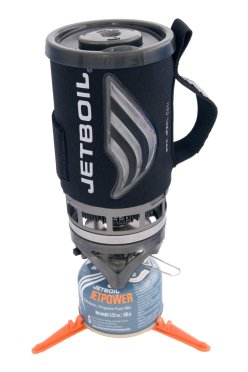 Why it’s great: This is one of the most perfectly-conceived products I’ve ever used. It’s an all-in-one water heater that includes fuel, stand, insulated container, and firestarter all in one ingeniously-designed package.
Why it’s great: This is one of the most perfectly-conceived products I’ve ever used. It’s an all-in-one water heater that includes fuel, stand, insulated container, and firestarter all in one ingeniously-designed package.
It serves one purpose, but does that brilliantly: It heats water to a boil quickly. This doesn’t sound like a big deal, but it enables you to make coffee, tea, and cocoa—not to mention freeze-dried meals. It effectively replaces the stove, particularly since it includes a metal attachment that enables it to work as a stove if you really need one. (We didn’t use that feature in the Everglades Challenge, though we have on more leisurely camping trips—most recently to make fried bacon-and-apples.)
The two most important components are the insulated container and the built-in firestarter: All you have to do is turn on the gas and hit the button. No fiddling around with matches to light it, or messing with tongs to grab hold of the container.
Also—and maybe this is just me—after use it packs back together almost like a Rubrik’s Cube. That is, there are about two ways you can pack everything (including the fuel canister) back into the container—and about eight ways that don’t work. Realistically, that should be considered a bug, not a feature—but I like it. Every time I successfully put it together I experience a small frisson of accomplishment.
What could be improved: Well, it could be more waterproof. After Vlad’s drybag (not a Watershed bag!) let in a lot of water during the race, we are afraid that Vlad’s backup Jetboil may be dead.
Apart from that, pretty much nothing. It’s insanely reliable, wonderfully effective, and perfectly designed. I just love this product (which comes in a rainbow range of pretty colors—mine’s blue, and Vlad’s is silver).
______________________
Product: Romney’s Kendal Mint Cake
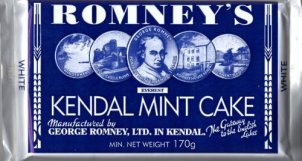 Why it’s great:This sugar-and-mint confection falls into the category of “products you never knew you needed”.
Why it’s great:This sugar-and-mint confection falls into the category of “products you never knew you needed”.
Pretty much every paddler has his/her favorite source of quick energy—before the Kendal Mint Cake, we tended to favor peanut M&M’s (in the summer) and Snickers bars (in the winter). But after a friend from Britain’s Lake District introduced us to the mint cake, we were converts.
What’s great about it? Well, first, there are the ingredients: a combination of glucose, sucrose, and mint oil. You get an immediate burst of energy without the downstream crash—in fact, we found the mint cake was almost as effective as caffeine tablets, and much kinder to your stomach. Not only does it supply energy and alertness in the middle of the night, but it helps to stave of hypothermia (particularly when combined with hot coffee). And although I’m not usually a fan of mint, I love the taste!
There’s also what we engineers call the “form factor”—despite the name, the consistency isn’t cake-y at all. The cakes are hard rectangles that stay together remarkably well, though they can occasionally break—but the pieces remain perfectly edible. I like to dip them in salt water before eating them (if we’re out in the open ocean). They’re too firm to dissolve quickly, and the salt adds an extra tang to the flavor.
And the packaging is perfect. It’s not perfectly waterproof—you’ll want to keep them in a good drybag, such as a Watershed—but it’s good enough. Plus the bags stay closed until you’re ready to open them, and then open without fuss—there’s a spot where two seams join perpendicularly, and you can just pull them apart. (I know, it sounds like a small thing, but picture yourself in a boat in choppy water in the middle of the night—not having to get out a knife is a big plus! See Tanka Bars below…)
Once again, this is a product that is manufactured in the home country (in this case, Britain). The history is pretty interesting. Romney’s Kendal Mint Cakes were invented—or as the company puts it, “discovered”—in 1869, and, according to the company, they were used during the 1953 expedition to Everest. As the company’s promotional material puts it: “Sir Edmund Hillary and Sirdar Tensing ate this mint cake on top of Everest as they gazed at the countryside down below. Tensing also left some to appease his ‘gods’.”
I’m pretty sure the gods were pleased with their gift—I’d be!
What could be improved: Pretty much nothing. What can you say about a product that takes you from Mt. Everest to the Florida Everglades? The one thing I’d like to see is a U.S. distributor—we bought ours through Amazon, and they’re ridiculously expensive ($12 per cake).
______________________
Product: Tanka Bars
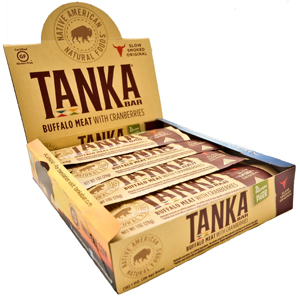 Why it’s great: Somewhat counterintuitively, getting enough to eat is often a problem on long trips. After the first day, your appetite pretty much vanishes—and you may also get various forms of indigestion that make eating unpleasant.
Why it’s great: Somewhat counterintuitively, getting enough to eat is often a problem on long trips. After the first day, your appetite pretty much vanishes—and you may also get various forms of indigestion that make eating unpleasant.
This is a problem for two reasons. Short-term, not eating depletes your energy (this is where the Kendal Mint Cakes are so effective—they’re easy to digest, and provide a great burst of energy with no crash.)
But longer-term, your body will begin devouring itself if you’re not taking in enough nutrients. While most of us are delighted to be burning our fat stores, we don’t want to lose the muscle we’ve carefully built up—and the body will burn protein if it has to.
Finding effective, healthy, easy-to-consume protein sources is difficult, though, particularly for warm-water paddling. Cheese melts and nuts are filling but relatively low in protein; sausages and pepperoni are tasty, but often contain too much salt and other chemicals; and while vacuum-packed fish (salmon and tuna) is cheap and tasty, it’s complicated to eat on the water. You need a knife to open it, and a fork to dish it out (unless you’re willing to drench yourself in fishy liquid as you attempt to pour it down your throat).
Enter Tanka Bars: Made from grass-fed bison by native Americans, these bars combine buffalo meat and dried berries without any added gluten or chemicals. They’re a great way to meet your protein requirements—and you’re supporting native Americans and the restoration of American buffalo at the same time. I found out about these tasty, protein-packed snacks from a colleague whose wife is native American—and I’m really, really glad I did.
That said, I have to admit I liked the idea of the Tanka Bars somewhat more than the reality. The real issue, as I’ll describe below, is the packaging—I think the Tanka people can use a little more work there.
Vlad also found the taste someone annoying after a few days—the combination of sweet fruit and dried meat is an acquired taste, for sure. I like the flavor (particularly the spicy version) but found the texture a bit unnerving (the fruit “squishes” a bit).
But these are nits. Without Tanka Bars, we would have been well below our protein quotas. And we were delighted to eat them once we got off the water—not something you can say about most expedition food!
If you’re a fan of grass-fed meat, sustainable production, high-quality protein, and native American enterprises—I heartily recommend Tanka Bars.
What could be improved: The packaging. The packaging was simultaneously too flimsy and too difficult to open. In a couple of cases, the vacuum seal was obviously compromised, with the bars puffing up with gas (we discarded those).
And, with wet hands, we pretty much always had to use a knife to open them. The Tanka Sticks, in particular (which look like Slim Jims) were almost impossible to open—I ended up having to slice down the length of the package, and Vlad almost quit in frustration a couple of times, since his knife lacks a point.
But again, these are quibbles. Every time we opened a new snack bag, we looked to see how many Tanka Bars it contained (some had two, some had three, plus a few Tanka Sticks). And we’ll be buying more Tanka Bars for our time off the water, as well!

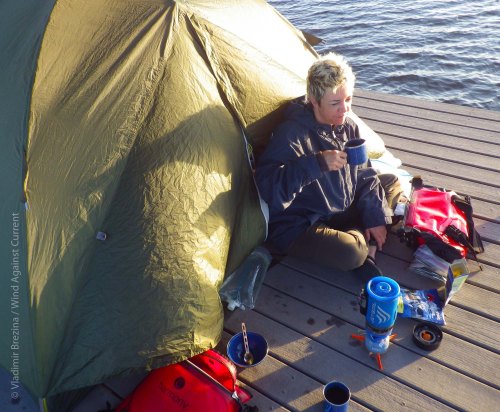



Pingback: Everglades Challenge, Overview | Wind Against Current
Pretty interesting and comprehensive. Those mint cakes sound like a tasty burst of energy.
LikeLike
The mint cakes are FANTASTIC! Can’t recommend them more highly…
LikeLike
I am not sure if I will ever be interested in kayaking…but sure did find your post on what it takes to prepare for it, very interesting! “Gazed at the countryside from top of the Everest”!! That’s original! :D
LikeLike
Actually, Vlad was JUST commenting on that very thing.. “countryside” connotes little cottages, maybe a tilled field here and there… but the actual vista is clouds, rocks at insane angles, more clouds, more rocks… not exactly “countryside”!
LikeLike
Reblogged this on Locating Frankenstein's Brain.
LikeLike
Thanks for reblogging!
LikeLike
Jet Boil. I agree with you, Fantastic way to get fast meals, especially dehydrated, quick and easy.Pension off the old stove !!!
LikeLike
I would still defend the stove (which I have, but didn’t bring on the Everglades Challenge):
The Jetboil is great at quickly boiling water, but not all that much else. So the Jetboil is great for hot drinks and dehydrated meals, but for more creative cooking (for which we knew we wouldn’t have time on the Challenge) you still want a stove.
Furthermore, the Jetboil design has that modern “philosophy” that often turns out to be problematic when things go wrong. It’s a high-tech, precisely engineered and integrated package that requires its own special fuel—great as long as it’s working, but hard to repair when it fails and unusable when the fuel is unavailable. The simpler stoves, in contrast (such as the MSR Whisperlite) can be taken apart, reassembled, parts replaced, and use any kind of fuel, from the Jetboil fuel itself to white gas and even gasoline / petrol at a pinch…
LikeLike
Reblogged this on Fastreading.
LikeLike
Thanks for reblogging!
LikeLike
Very informative post… :)
Thank you so much for sharing.
LikeLike
You’re welcome! Thanks for reading, and posting!
LikeLike
Johna,
Very helpful information, as always. I am wondering about your Watershed bags. They sound great. Over the years we have accumulated quite a pile of dry bags. Watershed’s wide opening, and of course the “DRY” feature are what will prompt me to buy a couple. I get the color coding, too. We pack a covered canoe and it will be great to have wider (lengthwise) opening bags sitting under the cover. Did you use any clear ones? We thought we had things optimized with clear bags we mark with colored tape. What we don’t enjoy is the access Watershed bags offer. Our “cylinder” shaped bags still require lots of digging even when you can see what you want. Being able to open the entire “length of the bag will be an important feature. Thanks. Mmm, love Kendal’s Mint Cake.
George
LikeLike
Yes, I have one clear one (after getting red, blue, yellow and black in the same size, the “clear” was one of the few choices left).
Interestingly, it wasn’t particularly helpful to me to see which items it contained.
The reason is how I organize things: Red was stove and cookware, blue clothing, black backup, yellow repair, and clear was sleepgear. At that point I already *knew* that “sleepgear” would contain sleeping bag, pillow, and air mattress—I didn’t need to look at it to see. Ditto for all the others, of course.
So unless I’m putting stuff in the wrong bags, I already know where it is, and being able to see that it’s there adds very little (particularly since for a kayak, the time you REALLY need to know what a bag contains is before you pull it out of the hatch—not true for a canoe, I understand!!).
One thing about the bags, they require a bit of regular maintenance: After each significant use or so, you’ll want to wash and dry them, and then coat the closure with 303 oil. The manufacturer thoughtfully provides several mini-containers along with the bag (another reason to love them) so it’s dead easy. I’m not the best at maintenance, but I actually enjoy caring for them!
LikeLike
Johna,
Thanks again! We get away with using much larger bags than would fit conveniently in a kayak’s hatch. A couple of 3′ long bags on either side of center with smaller ones carefully tucked in so there is room for the cooler to sit athwart ships just in front of the stern paddlers feet. Yellow clothing and bedding bags ride on top of everything. Everything must be “clipped” in. Our cover keeps things dry but we don’t expect it to keep things in if we dump. The info. on the closure maintenance is helpful. We have some HD bags with dry suit “zippers”. Their careful use and maintenance is crucial, too.
LikeLike
such a comprehensive post on your gear Johna, I am sure many others will be grateful to you for your feedback, but I just enjoy reading about need and ingenuity coming together with good solutions :)
LikeLike
Thanks, Christine! And I agree… I was checking out the Jetboil site and they have photos of the two guys who came up with the idea. It’s so easy to forget that the ingenuity all around us comes from fellow humans….
LikeLike
Hi Johna —
Ever grateful for the gear advice. Last year you inspired M to get an Ikelos paddle, this year the Watershed Ocoee is getting a hard look — may be the solution to a longstanding camera dry bag problem. Meanwhile J’s new Kokatat dry suit arrives today.
Thanks from two apes in Albany!
M&J
LikeLike
A Watershed bag would probably make a good camera dry bag—except for not being closable very quickly, with one hand in one movement, something that I myself would really want…
LikeLike
Woohoo! Perfect time to get a drysuit, also–almost the end of the season (though it sure doesn’t feel like it, eh?) Glad this is useful. Vlad wanted me to focus on more of the storytelling but I just couldn’t wait to tell everyone how awesome some of this gear is… I’ve loved Jetboil a long time but the other three are relatively new.
BTW, we used the Jetboil to make fried bacon-n-apples when we were up in Hudson…yummy!
LikeLike
For us more like almost the start of the season — today the first day this year liquid water is visible from the N. Germantown Landing webcam.
http://cameras.gtel.net/
A long time coming, normal late March temperatures and that dry suit will receive use by April.
LikeLike
Really? Amazing! We are spoiled down here in NYC. There’s still a residual pile of dirty icy snow here and there, if you look for it, but that’s all… The temperatures are still not spring-like, however.
LikeLike
Oh that’s right. All the stuff we saw in the Hudson embayments earlier this year had to come from SOMEWHERE! I haven’t seen ice floes in the East River since we’ve gotten back, but I read somewhere that winter hasn’t let go of us yet… we’re supposed to be getting another Polar Vortex shortly.
All I can say to that is… http://www.youtube.com/watch?v=VnjfYrE7xYQ
LikeLike
I have so enjoyed reading your blogs and looking at your pictures! Thank you! My bucket list includes a multi-day kayak trip. These suggestions are great!
LikeLike
Thanks, Cheri! Hope they help—good luck! :-)
LikeLike
Great post. I SO wasn’t expecting to find Kendal Mint Cakes on your list. For me they are totally English and I get all nostalgic thinking about them. :-)
LikeLike
They are totally English! Anyone who describes the view from Mt. Everest as “the countryside below” has to be ;-)
We were introduced to them recently by someone from there… but we are happy to find we are spreading the word!
LikeLike
Isn’t that hysterical. Bet that’s not what Hilary said. :-)
LikeLike
I strongly suspect not. But now that you mention it, what did Hilary say at the supreme moment? He must have thought about it ahead of time, and had something prepared, along the lines of “That’s one small step for a man, a giant leap for mankind.” Nowadays, of course, it would all be fully scripted and vetted through consultants and focus groups… ;-)
LikeLike
Apparently he said “we knocked the bugger off.” And given that Hilary was a bee-keeper from Auckland – an archetypical “kiwi bloke” – I don’t have trouble believing that.
LikeLike
That certainly has the ring of truth…. clearly, it was in pre-focus-group days :-)
LikeLike
:-) yeah, I can’t imagine what he be expected to say these days. Although, we Kiwis do like our heroes to be droll, pithy and masters of under-statement.
LikeLike
I think the Brits and all the ex-colonies tend in that direction: “I am just going outside and may be some time” (whether real or apocryphal). Whereas Americans, of course, tend to the other extreme…
LikeLike
Pingback: Everglades Challenge, the Days Before: Preparation and Gear Check | Wind Against Current
I eat a lot of protein bars, I’ll have to try one. Where do you get them?
LikeLike
The Tanka bars? I believe we got them directly from Tanka. However, on Amazon they appear to be significantly cheaper…
LikeLike
Will be going to London in a month — will definitely look for Kendal Mint Cake and will probably have to try Romney’s fudge as well. :-) Thanks for the info.
LikeLike
Do! Although these days it’s probably much the same buying it in London as in New York. Romney’s seem to have done a good job of worldwide marketing…
LikeLike
Ah, of course, and then there’s always the possibility of buying online.
LikeLike
That’s what I meant, actually—we buy pretty much everything online these days…
LikeLike
I love that watershed dry bag!
LikeLike
I think we’ll be buying a few more of them… :-)
LikeLike
Buy some puff paints and write on the bags what they are. Puff paint does not wash off.
LikeLike
That would work! Except for the slight downside that the contents may change from trip to trip. Then we’d have to remember that, for this particular trip, “Spare clothes” are really “Spare batteries”… Too much of a mental overhead… ;-)
LikeLike
Plus, that doesn’t much help when the bag is in the hatch. Sometimes you can only see a small corner of it–that’s what makes the colors so helpful….
LikeLike
Pingback: Everglades Challenge, Segment 2: Cape Haze to Magic Key | Wind Against Current
Pingback: Everglades Challenge, Segment 3: Magic Key to Indian Key | Wind Against Current
I love a post that gives me something to ponder, and this one certainly did. How manly is a Navy Seal who isn’t up to carrying a fuchsia bag?
LikeLike
:-) Seals with fuchsia bags will certainly be easier to spot…
LikeLike
Pingback: Everglades Challenge, Reflections: What Worked, What Didn’t | Wind Against Current
I get great ideas on gear to adapt to my photography excursions from you.
LikeLike
Yes, I can see there might be quite a bit of overlap :-)
LikeLike
Pingback: I Did It! | Wind Against Current
Pingback: TBD Thursday: Dry Stuff | 2 Geeks @ 3 Knots